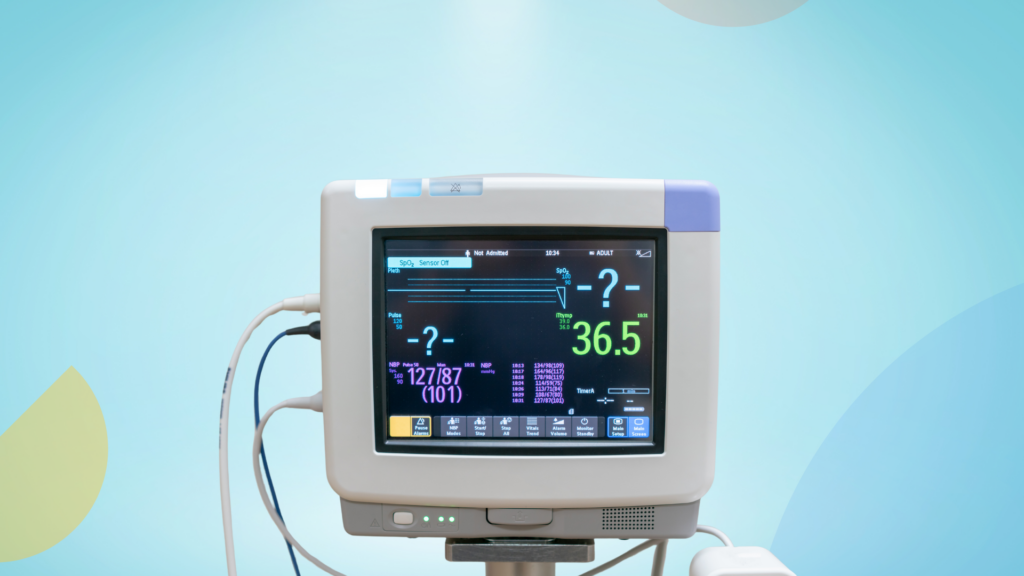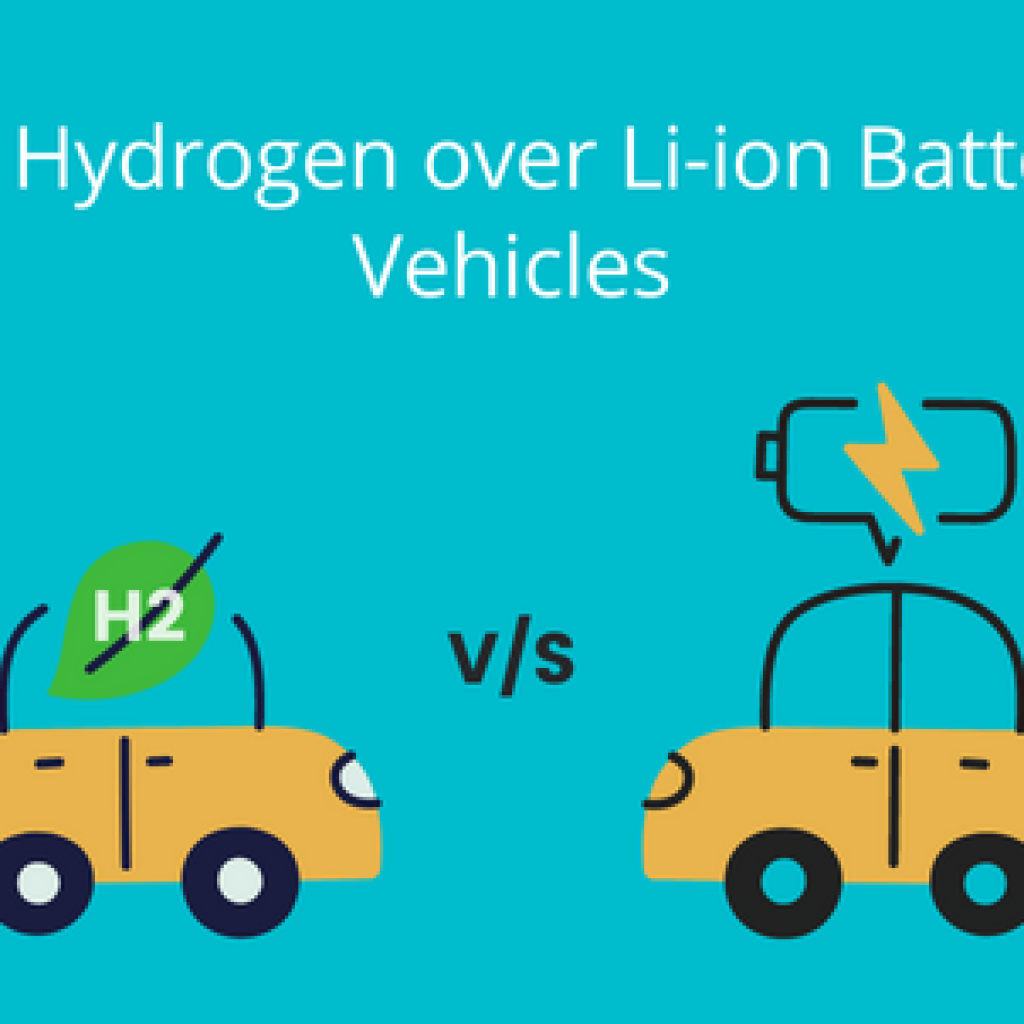Over the years, there has been tremendous progress in the solar and wind energy sectors. Still, a power grid that relies on these volatile resources will struggle to match supply and demand consistently.
Moreover, renewable energy has a high wastage rate because it is produced when not needed. This is where thermal energy storage systems can come to our rescue.
Thermal Energy Storage System, a part of the Long Duration Energy Storage System (LDES), is considered a primary alternative to solar and wind energy. To download this report as a PDF for later reference, please fill out this simple form below.
Get the Report in your Inbox
Fill the form to get access to the report
Global Thermal Energy Storage System Market Size during 2020-2030 ($Billion)

Companies and governments have realized TES’s potential and have started working on its storage facilities. As a result, we have witnessed thermal energy storage facilities in different parts of the world. Europe has seen the most growth in this particular energy storage trend.
The article explores TES systems as a solution to the inconsistency and waste in renewable energies like solar and wind. It details various global TES projects, including Finland’s innovative “sand battery” and China’s CSP initiatives.
Polar Night Energy (PNE), a Finnish cleantech company, installed a thermal energy storage facility that can store clean energy for months using the world’s first “sand battery.” The high-tech storage tank simply uses cheap power from solar and wind to heat sand, which then stores the heat at roughly 500°C and can heat local buildings during the winter months, when energy is most expensive.
At the same time, Vattenfall was also working on a 200MW thermal energy facility in Berlin by filling a 45m-high landmark with 56 million liters of water, which will be heated at 98°C. The facility will heat the city as part of Vattenfall’s existing Reuter West combined heat and power plant.

Source: Energy Monitor
In January 2022, The Chinese government announced intentions to construct 11 CSP projects incorporating thermal energy storage by 2024. They are gigawatt-scale hybrid renewable energy projects that will be introduced within the next two years. (Source)(Source)
In Nov 2022, three Department of Energy national laboratories formed cooperation to accelerate the development of thermal energy storage, or TES, for buildings. (Source)
As we discuss governments and companies pioneering the Thermal Energy Storage domain, it is essential to be well-versed in the advantages and challenges of this technology.
Thermal Energy Storage System Advantages
Energy efficiency improvement: Thermal energy storage systems provide increased energy efficiency, one of the benefits of thermal energy storage to power systems. For example, District heating systems promote energy efficiency by conserving and utilizing heat when required. As a result, less fossil fuel is needed, and plant emissions are decreased, resulting in lower product costs. However, TES needs help to deliver these advantages. Intelligent control systems and information and communication technologies (ICT) are most needed to contribute to improved energy management.
Boost generating capacity: The need for heating, cooling, or power is rarely consistent. The surplus production capacity available during low-demand periods can be charged to a TES to improve efficient generation capacity during high-demand periods. This procedure enables the installation of a smaller manufacturing unit, resulting in a higher load capacity for the units.
Minimal maintenance cost: Thermal storage systems usually have lower maintenance costs because they use smaller chillers, cooling towers, and pumps than conventional systems. Even if used for more hours, the system’s frequent stops and starts can still result in lower maintenance costs than a conventional system that often operates at partial load, which can be just as hard on maintenance as full load operation. (Source)(Source)(Source)(Source)
Thermal Energy Storage Challenges
Expensive initial setup costs: Thermal energy storage system costs vary according to application, size, and heat insulation technique. Thermal storage technologies based on phase transition materials (PCM) and thermo-chemical storage (TCS) are typically more expensive than the storage capacity they offer. Storage systems account for 30% to 40% of total system costs. Latent-heat storage systems built on PCMs are predicted to cost between Є10/kWh-Є50/kWh ($10.7/kWh-$53.5/kWh). On the other hand, TCS expenses are expected to be between Є8/kWh-Є100/kWh ($8.56/kWh-$107/kWh). The TES’s economic feasibility strongly depends on application and operation requirements, such as the quantity and frequency of storage cycles.
Boosted competition from pumped and battery storage: Understanding the benefits of battery and thermal energy storage is critical for utilities and power plant managers. Batteries are excellent for providing standby power for lights, elevators, and computers. However, thermal energy storage is the simpler approach for a structure to reduce peak electric consumption.
Most battery storage projects developed by system operators (ISOs/RTOs) are for short-term energy storage and are not designed to replace the existing grid. Most of these installations employ lithium-ion batteries, producing enough energy to power the local grid for 4 hours or less. Even though thermal energy storage requires lower project costs, it is not as desired as battery and pumped-hydro storage due to lesser efficiency at larger scales. As a result, these replacements function as obstacles in expanding the thermal energy storage sector. (Source)(Source)(Source)
Thermal Energy Storage Companies
1. Steffes
Steffes, headquartered in North Dakota, is a lean-operating original equipment manufacturer. The company offers steel fabrication and electrical services for oil & gas, contract manufacturing, and electric thermal storage industries. (Source)
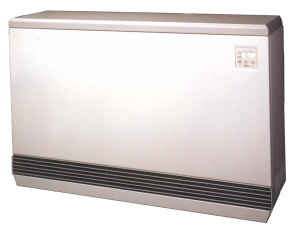
Steffes Electric Thermal Storage systems are smarter, cleaner, and more environmentally friendly, providing a better residential and commercial option. They improve efficiency by utilizing off-peak electricity. This is charged at a reduced rate since it is consumed when demand on the electrical grid is low. The company’s ETS systems also convert off-peak electricity to heat and store it in high-density ceramic brick heating elements. Since ETS systems do not produce carbon monoxide, they are safe and require very little maintenance. (Source)
Important Collaborations
In 2021, Steffes announced its decision to expand into the southeast by acquiring a manufacturing site in Shelby, North Carolina. This investment was valued at $20.9 million. Production commenced in late 2021, aiming to be fully operational in the first quarter of 2023. (Source)
Additionally, in 2022, the company announced an expanded distribution collaboration with The Master Group (Master) for the Canadian market. The deal grants The Master Group the rights to distribute and resale residential Steffes heating products in the Canadian market. This allows the company to grow its presence in Quebec and Nova Scotia provinces through Master’s contractor network. (Source)
2. Caldwell Energy Company
Based in the United States, Caldwell Energy is the only company offering all turbine intake cooling technologies. They offer solutions like Wet Compression Technology, Evaporative Cooling with Fog, Chilling, and Thermal Energy Storage. The firm has worked directly with the major combustion turbine OEMs to supply these solutions for new and retrofit applications. (Source)(Source)

Its Combustion Turbine Inlet Air Cooling (CTIAC)TM system, called PowerStor®, has thermal energy storage, one of the greatest net outputs of any CTIACTM application. The significant increase in power production (20-25%) is attributable to the system’s low auxiliary power consumption during on-peak activities. (Source)
3. MAN Energy Solutions
MAN Energy Solutions, located in Germany, offers reliable thermal energy solutions, from power plant development to long-term service packages. The company’s solutions use fossil fuels and renewable energy sources such as solar power, biomass, and geothermal energy.
The company offers solutions for base load, peaking, waste-to-energy (WtE), geothermal energy, biomass, power barges, and concentrated solar power (CSP). (Source)
Important Collaborations
In 2022, BASF and MAN Energy Solutions partnered to build an industrial-scale heat pump in Ludwigshafen’s BASF facility. This project aims to significantly reduce greenhouse gas emissions by implementing low-CO2 technology in chemical manufacturing. It also reduces the site’s natural gas consumption.
According to Dr. Martin Brudermüller, Chairman of the Board of Executive Directors of BASF SE, “In the medium term, we want to reduce our CO2 emissions by 25 percent by 2030. Using existing technologies that can be scaled up to industrial size brings us closer to this goal. In our cooperation with MAN Energy Solutions, we combine the expertise of a chemical Verbund site with the know-how required for the technological implementation of a project like this. This technology also has the potential to pave the way for projects at other BASF sites.” (Source)
Thermal Energy Storage Startups
1. Antora Energy
Antora Energy, based in the United States, uses zero-carbon heat and electricity to electrify heavy industry. Its thermal energy storage absorbs extra solar and wind energy to heat carbon blocks, which glow like toasters within. On-demand, this thermal energy is given to clients as electricity or industrial processes heat up to 1500°C. In summary, Antora Energy converts sunlight and wind into 24/7 heat and power at a lower cost than fossil fuels. (Source)(Source)

Important Collaborations
In 2018, the National Renewable Energy Laboratory (NREL) collaborated with Antora Energy and the Massachusetts Institute of Technology (MIT) on two separate studies involving thermophotovoltaic (TPV) technology. Antora Energy used NREL’s manufacturing facilities to build larger TPV cells and progress its technology toward commercialization and grid-scale energy storage with support from the Advanced Research Projects Agency-Energy (ARPA-E) and the Shell GameChanger Accelerator Powered by NREL (GCxN). (Source)
2. Malta
Malta has created a thermal energy storage system that can gather and store energy from any source (wind, solar, etc.) in any place. Not just that, the system is designed for lengthy periods of time, and eventually, the stored energy is dispatched as electricity on demand for 8 hours to 8+ days. (Source)
This startup’s technology is based on well-established thermodynamic principles, storing energy as heat (in molten salt) and cold (in a chilled liquid). Its unique thermo-electric energy storage system is a flexible, low-cost, and adaptable utility-scale solution for storing energy at high efficiency over long periods of time. The system comprises standard components and abundant raw materials such as steel, air, salt, and commodity liquids. (Source)
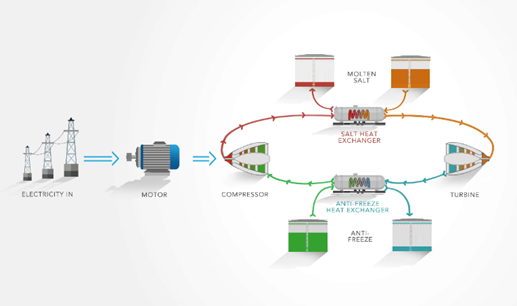
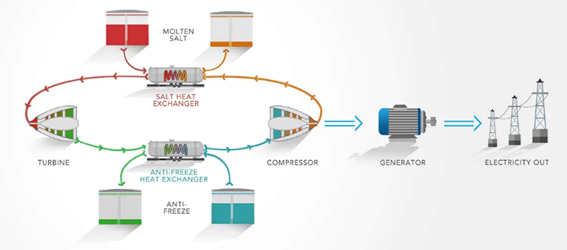
3. MGA Thermal
MGA Thermal, based in Australia, provides thermal energy storage solutions using the company’s core technology, Miscibility Gap Alloys (MGA), a recently invented form of thermal storage material. This technology is used in Thermal Energy Storage Systems (TESS), which provide continuous high-temperature heat or power that is safe, low-cost, long-lasting, and high in capacity. The solid-liquid phase change in the blocks stores significant thermal energy released as they cool and the particles solidify. (Source)
MGA Block
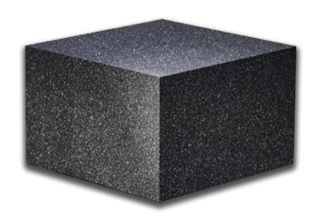
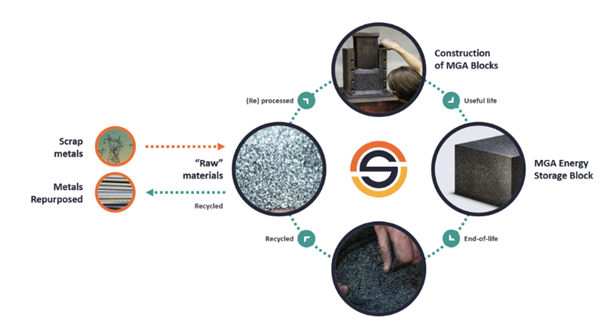
4. Stash Energy
Stash Energy is a Canadian company that develops energy storage and demand response solutions for homes and businesses. The company’s core product is the Stash Energy Mini-Split Heat Pump. During the heating season, the Energy Heat Pump draws heat from the outside air and rejects heat outdoors during the cooling season. The product also allows homeowners to store energy during off-peak hours for usage during peak hours when electricity is more expensive to provide for the utility. (Source)
Heat Pump
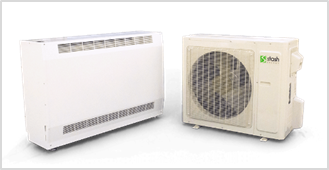

Important Collaborations
In 2021, NB Power announced partnerships with Stash Energy to leverage the company’s unique technology as part of the Shediac Smart Energy Community Project’s home research component. Stash heat pumps will be installed in up to 50 participants’ houses by spring 2022.
According to Keith Cronkhite, President and CEO of NB Power, “It’s incredible to be able to work with a New Brunswick company like Stash in solving the big problems facing utilities across North America. Their technology is unique in that it provides the kind of heating and cooling our customers want in their homes while providing utilities the opportunity to move the need for energy for heating to off-peak times with the benefits flowing to both parties.” (Source)
5. Inficold
Inficold, based in Uttar Pradesh, develops cold storage rooms, milk coolers, and air conditioners with grid-resilient and off-grid solar integration options. Refrigeration systems powered by a diesel generator make cold chain infrastructure costly to own and run.
The company has addressed these difficulties with its award-winning thermal energy storage and off-grid solar integration. Thermal energy storage uses cooling in the form of ice to store energy for later use. It requires 6 – 8 hours of grid/solar power to offer 24 x 7 cooling without needing a diesel engine or an electric battery. Solar photovoltaic systems are incorporated for captive consumption of solar energy without the requirement for net metering (which requires DISCOM approval) or electric batteries (which must be replaced regularly). This allows for quick installation and a short payback period. (Source)(Source)

Conclusion
Although the thermal energy storage system saw investments, the pace and amount are average. However, that could change as the recognized investment firms also pour money into thermal energy storage startups. One of them is Bill Gates VC’s investment firm, which invested in Antora Energy earlier this year. (Source)
Further, acquisition activities in this particular tech were also witnessed. In 2021, Infracaptial acquired EnergyNest for its Thermal Battery technology, a game-changing solution for storing thermal energy on a large scale. (Source) It’s still in the early stages of development and would need investment and research to compete with other energy storage technologies.
Our report discusses 10 Energy Storage Innovation Trends, including Thermal Energy Storage. You can download the full report by filling out the form:



